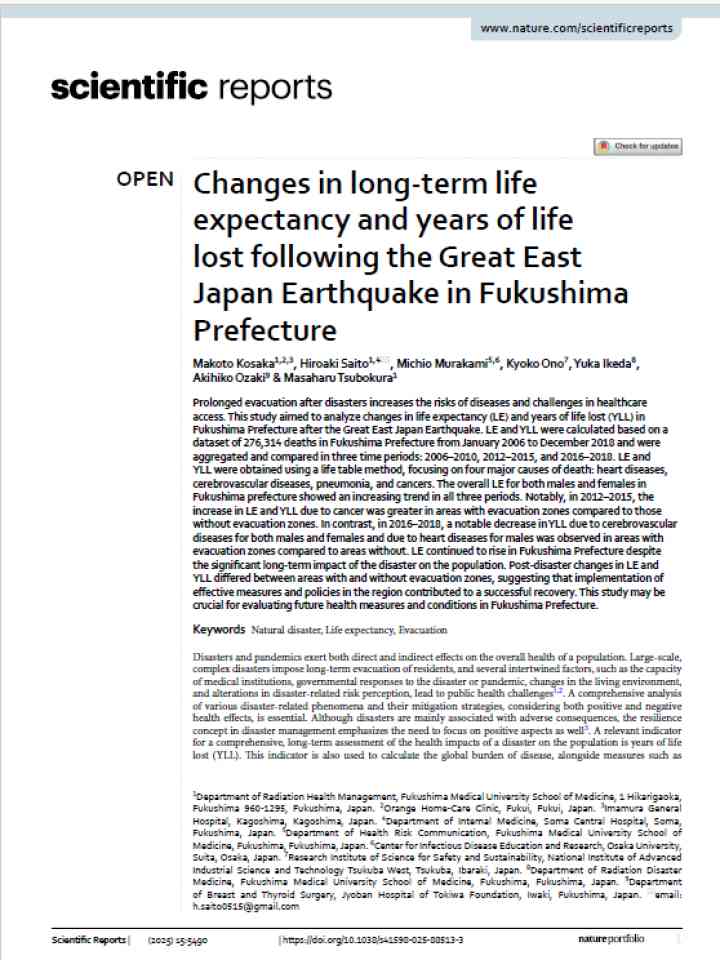Changes in long-term life expectancy and years of life lost following the Great East Japan Earthquake in Fukushima Prefecture
This study aimed to analyze changes in life expectancy (LE) and years of life lost (YLL) in Fukushima Prefecture after the Great East Japan Earthquake. Prolonged evacuation after disasters increases the risks of diseases and challenges in healthcare access. LE and YLL were calculated based on a dataset of 276,314 deaths in Fukushima Prefecture from January 2006 to December 2018 and were aggregated and compared in three time periods: 2006-2010, 2012-2015, and 2016-2018. LE and YLL were obtained using a life table method, focusing on four major causes of death: heart diseases, cerebrovascular diseases, pneumonia, and cancers.
Findings suggest that the overall LE for both males and females in Fukushima prefecture showed an increasing trend in all three periods. Notably, in 2012-2015, the increase in LE and YLL due to cancer was greater in areas with evacuation zones compared to those without evacuation zones. In contrast, in 2016-2018, a notable decrease in YLL due to cerebrovascular diseases for both males and females and due to heart diseases for males was observed in areas with evacuation zones compared to areas without. LE continued to rise in Fukushima Prefecture despite the significant long-term impact of the disaster on the population. Post-disaster changes in LE and YLL differed between areas with and without evacuation zones, suggesting that implementation of effective measures and policies in the region contributed to a successful recovery. This study may be crucial for evaluating future health measures and conditions in Fukushima Prefecture.
Explore further
